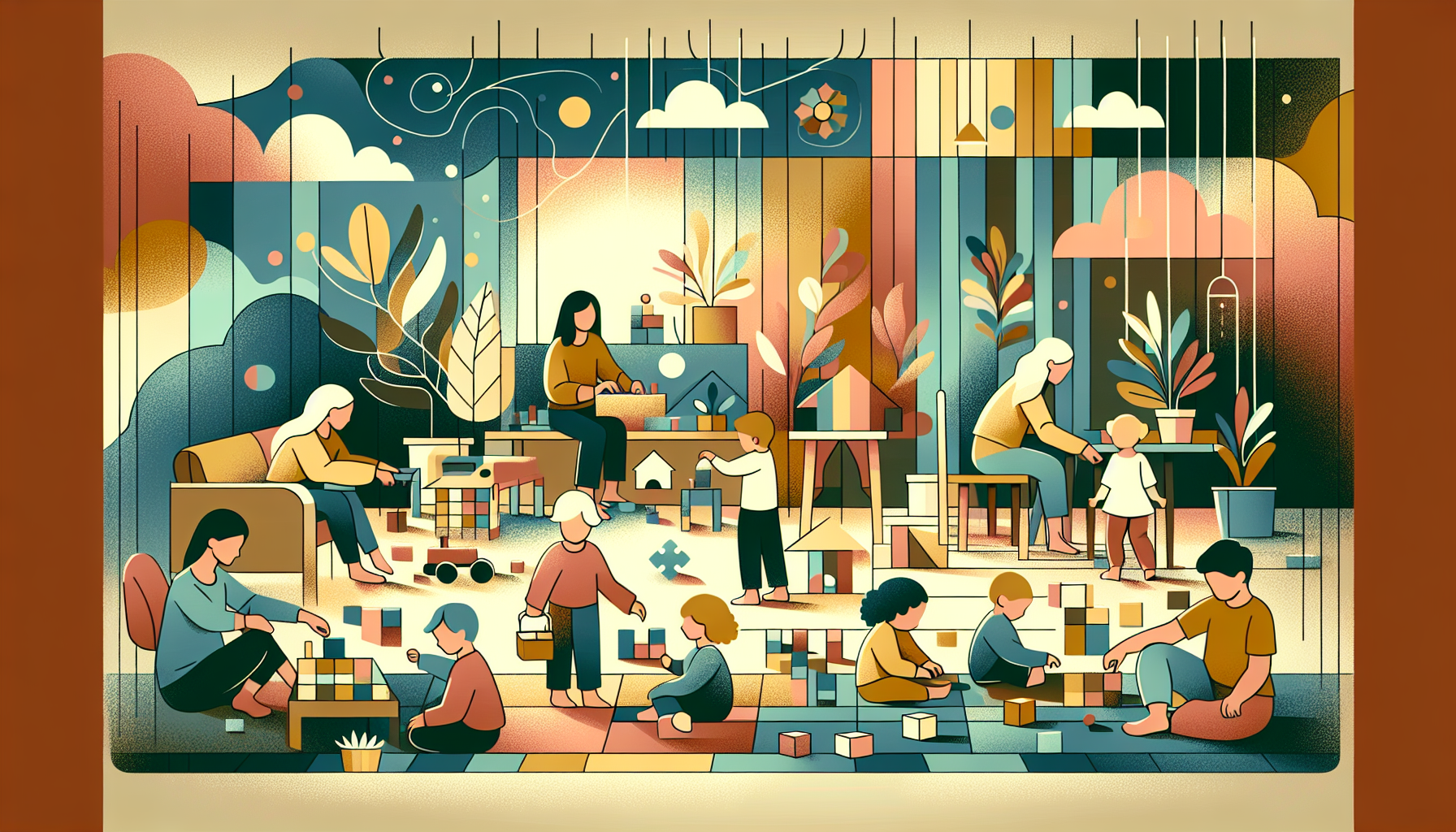“`html
Encouraging Child Creativity Through Play
Introduction
Creativity is one of the most valuable skills a child can develop. It fuels imagination, problem-solving, and self-expression, laying the foundation for success in both personal and professional aspects of life. As parents, you play a crucial role in nurturing these abilities. One of the simplest and most effective ways to foster child creativity is through play.
Play is more than just fun—it’s a powerful tool for development. By creating opportunities for play that inspires creativity, you can help your child build confidence, think outside the box, and develop lifelong skills. In this article, we’ll explore the connection between play and creativity, dive into psychological principles, and provide actionable tips to encourage your child’s creative growth.
Main Points: The Role of Play in Creativity
1. Why Creativity Matters
Creativity isn’t just for artists—it’s a skill that touches every aspect of life. Children who engage in creative activities often develop better problem-solving abilities, emotional regulation, and social skills. According to research, creativity also promotes resilience, helping kids adapt to new challenges and navigate the complexities of life with ease.
2. How Play Enhances Creativity
Play acts as a natural medium for children to explore, imagine, and experiment. From building blocks to role-playing games, play provides a safe environment for children to express themselves and try out new ideas.
For example:
- Free play: Activities like drawing, painting, or building with Legos allow kids to create without boundaries, fostering their ability to think independently.
- Role-playing games: Pretending to be a doctor, chef, or superhero encourages children to use their imagination, enhancing their ability to think creatively and empathize with others.
- Problem-solving games: Puzzles, scavenger hunts, or science experiments challenge kids to think critically and find innovative solutions.
3. Psychological Insights into Creativity
Creativity is deeply tied to psychological well-being. Cognitive-behavioral therapy (CBT) highlights the importance of meeting basic psychological needs for optimal mental health. These needs include:
- Safety: Play provides a secure environment where kids feel free to express themselves without fear of judgment.
- Autonomy: Allowing children to choose their play activities empowers them to take ownership of their creativity.
- Self-expression: Creative play gives children an outlet to communicate their thoughts, feelings, and ideas.
By addressing these needs through play, parents not only nurture creativity but also foster emotional growth and self-confidence in their children.
Practical Recommendations for Encouraging Creativity
1. Create a Creative Environment
Designate a space in your home where your child can freely explore their creativity. Stock it with materials like art supplies, building blocks, musical instruments, or recycled items for crafting. Make it a judgment-free zone where mistakes are seen as part of the learning process.
2. Encourage Open-Ended Play
Choose toys and activities that don’t have a single “right” way to play. For example:
- Use open-ended toys like clay, building blocks, or magnetic tiles.
- Encourage activities like storytelling, drawing, or making costumes from old clothes.
- Let your child lead the play without imposing too many rules or instructions.
3. Be a Play Partner
Join your child in their creative activities. Whether it’s building a fort, painting a picture, or pretending to be astronauts, your involvement shows that you value their creativity. It also strengthens your bond and opens up opportunities for communication.
4. Limit Screen Time
While technology can be a tool for creativity, excessive screen time can hinder a child’s ability to engage in imaginative play. Set boundaries and encourage offline activities that spark creativity instead.
5. Praise Effort, Not Just Results
Focus on the process rather than the outcome. Celebrate your child’s effort, curiosity, and willingness to try new things. This helps build their confidence and motivates them to keep exploring their creative potential.
6. Expose Your Child to New Experiences
Broaden your child’s horizons by exposing them to different cultures, environments, and ideas. Visits to museums, libraries, or nature walks can inspire new interests and fuel their imagination.
Conclusion
Encouraging child creativity through play is one of the most rewarding gifts you can give as a parent. By providing opportunities for open-ended play, creating a supportive environment, and actively participating in your child’s activities, you’re fostering skills that will benefit them for a lifetime.
Remember, creativity isn’t about perfection—it’s about exploration, expression, and joy. By nurturing your child’s creative potential, you’re not only helping them grow into confident and innovative individuals but also strengthening your relationship with them. So, embrace the mess, join in the fun, and watch as your child’s imagination soars.
For more insights on child development and parenting tips, explore our resource library.
“`

